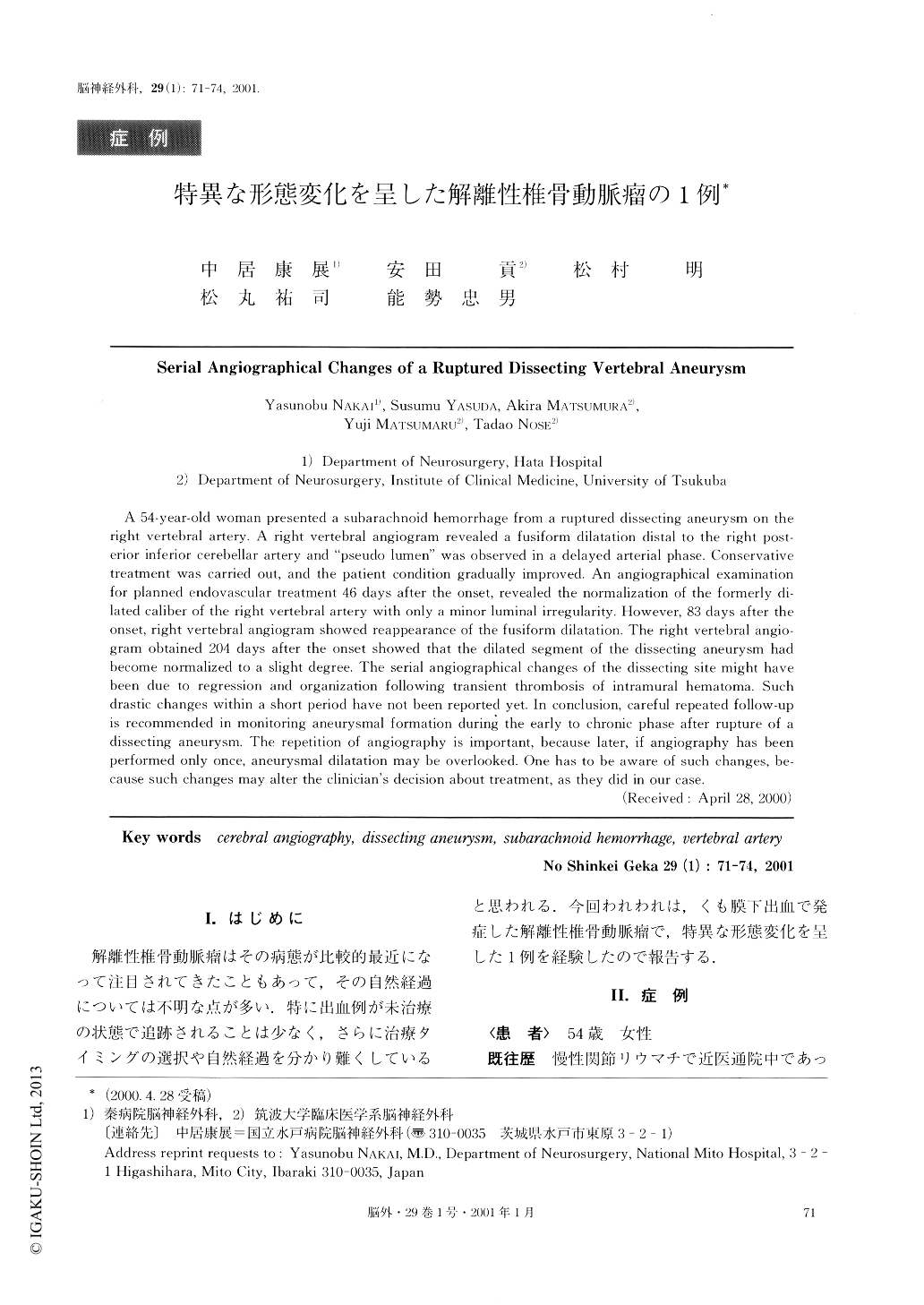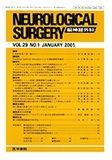Japanese
English
- 有料閲覧
- Abstract 文献概要
- 1ページ目 Look Inside
I.はじめに
解離性椎骨動脈瘤はその病態が比較的最近になって注目されてきたこともあって,その自然経過については不明な点が多い.特に出血例が未治療の状態で追跡されることは少なく,さらに治療タイミングの選択や自然経過を分かり難くしていると思われる.今回われわれは,くも膜下出血で発症した解離性椎骨動脈瘤で,特異な形態変化を呈した1例を経験したので報告する.
A 54-year-old woman presented a subarachnoid hemorrhage from a ruptured dissecting aneurysm on the right vertebral artery. A right vertebral angiogram revealed a fusiform dilatation distal to the right post- erior inferior cerebellar artery and “pseudo lumen” was observed in a delayed arterial phase. Conservative treatment was carried out, and the patient condition gradually improved. An angiographical examination for planned endovascular treatment 46 days after the onset, revealed the normalization of the formerly di- lated caliber of the right vertebral artery with only a minor luminal irregularity. However, 83 daysafter theonset, right vertebral angiogram showed reappearanceof the fusiform dilatation. The right vertebral angio-gram obtained 204 days after the onset showed that the dilated segment of the dissecting aneurysm hadbecome normalized to a slight degree. The serial angiographical changes of the dissecting site might havebeen due to regression and organization following transient thrombosis of intramural hematoma. Suchdrastic changes within a short period have not been reported yet. In conclusion, careful repeated follow-upis recommended in monitoring aneurysmal formation during. the early to chronic phase after rupture of adissecting aneurysm. The repetition of angiography is important, because later, if angiography has beenperformed only once, aneurysmal dilatation may be overlooked. One has to be aware of such changes, be-cause such changes may alter the clinician's decision about treatment, as they did in our case.

Copyright © 2001, Igaku-Shoin Ltd. All rights reserved.


